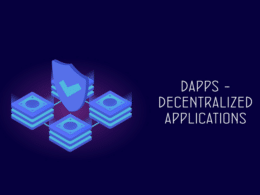The term ‘Initial Coin Offering’ is pretty self-explanatory. The name indicates that coins, which in this case are of a cryptocurrency, are being offered for the first time to the public. It is obvious that ICO has several parallels to IPO, initial public offering as both are undertaken with somewhat similar goals in mind, raising funds.
A new company initially raises funds from private investors. These investors understand the company’s financials in-depth and have a professional relationship with the founders or managers of the company as well. Once the company has proven to be successful in the short term, it then goes to the public market to raise a large amount of funds. These funds are raised in exchange for shares of the company, which represent fractional ownership.
A new cryptocurrency is very similar to a new company. There is an initial phase where the creators publish a white paper explaining the problem they are looking to tackle and the underlying protocols of the new cryptocurrency. Once everything has been figured out, the founders and their team can then go to the public.
The intention is to scale up the cryptocurrency or even a project that they are working on. The tokens are issued in exchange for fiat or other existing cryptocurrencies. These tokens can then be traded in the market or directly among individuals.
There are two major types of ICOs: private and public.
Private ICOs open up only for a select set of investors. These investors are typically accredited investors or institutions. They also might be entities that have a strong understanding of the underlying project for which the funds are being raised. In most private ICOs, there is a minimum investment size that is large enough to discourage most individual investors from participating.
While this might sound discriminatory, it is done to protect these investors. Many of these ICOs are risky, with a high probability of the investment turning to zero. Hence, it is better that only investors who can absorb these losses or have a fair understanding of the risks participate in it.
Public ICOs, as the name suggests, is open to all. They are similar to crowdfunding, where everyone can participate. These ICOs were and continue to be, on the large part, unregulated and, given many of the participants are not well informed on the investments, considered risky.
There have been occasions when public ICOs turned out to be just a pump and dump scheme or, on occasion, outright fraud. As a result, public ICOs have come under increased scrutiny from regulators, and hence many projects are moving to private ICOs to avoid them.
As these are relatively newer products, the regulations around ICOs are still evolving for them. Some countries have taken the easier route of outright banning ICOs. These countries include China and South Korea. On the other hand, countries like the US, Canada, and several European countries are developing specific regulations for these.
ICO lifecycle
Let’s learn about the life cycle of the entire ICO process. The first step is the identification of investment targets. It is crucial, especially for a private ICO, to understand their source of funds. It then has to create relevant materials to create a pitch that is suitable for those investors.
The second step is the creation of tokens. Many of the ICOs launched issue tokens that are not merely meant to be used as currencies. They often represent a stake in ongoing projects or can be exchanged for services on the platform that issued them.
For example, Ethereum’s blockchain platform allows developers to deploy their applications in an immutable manner. So, the process is not as complicated as it may seem because companies often use existing blockchains to create the tokens.
The next step, which often happens in tandem with the second step, is a promotional campaign. This step is particularly critical for public ICOs. The success of the ICO not only depends on having a strong underlying project but also on how many potential investors the team manages to reach. An ICO is termed successful only if it manages to raise all the funds that it targets.
If the ICO falls short of this target, the company has to return the rest of the funds to the investors. This is something that needs to be avoided at all costs, and hence the promotional campaign becomes critical.
These campaigns are typically run online since the crypto investing community is spread far and wide. Given little amount of regulation, overseas investors are also a major source of funds, and hence online campaigning is the most suitable.
However, presently, platforms like Facebook and Google have a ban in place on any advertising related to ICOs, so this step is, in fact, the most critical and the most difficult one.
Finally comes the launch, or what is termed as the ‘offering.’ This is a fixed period of days where investors can subscribe to the ICO. The offering can also be structured in several rounds instead of just one. If the ICO is successful and the company is able to raise the targeted amount of funds, then the investors receive the promised tokens.
So, overall, ICOs are not high-risk events or even complicated in nature. They are simply yet another way for a company or project to raise funds. However, in most cases, the underlying utility of tokens is unclear and, hence, it is difficult to recognize if the tokens are correctly priced.
Additionally, lack of any regulations means that there is little protection for investors in case of a fraudulent ICO where the company simply raises funds and vanishes. But if carefully understood, ICOs are a great avenue for new investments.








